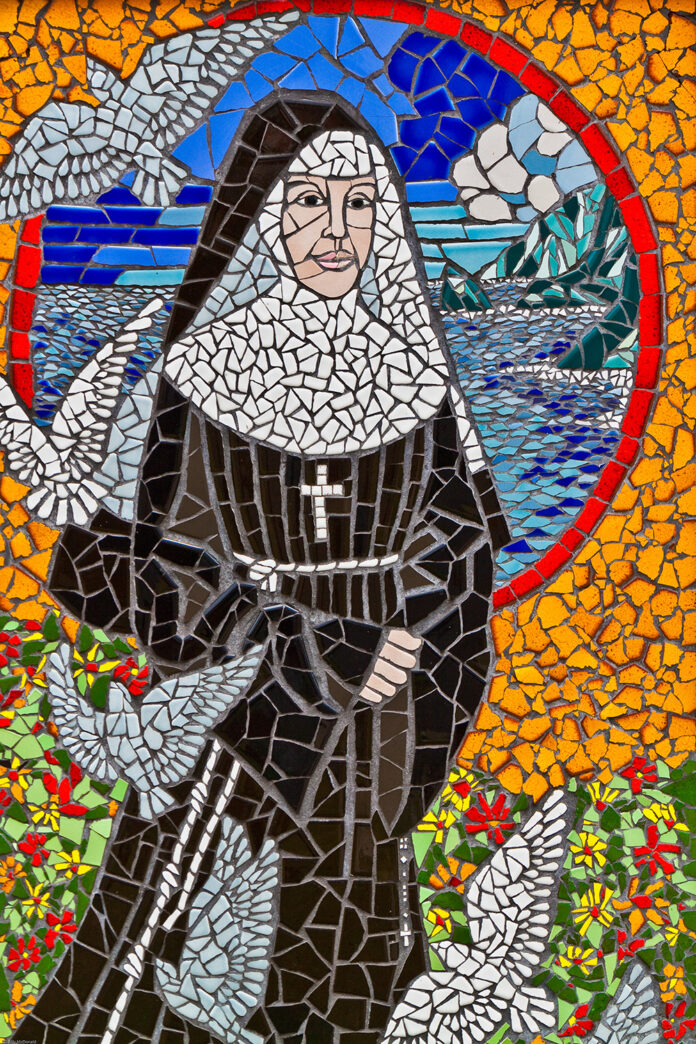Life’s journey is never a straight path. Oftentimes, it twists and turns in unimaginable ways. Many saints experienced abrupt changes and challenges. St. Marianne Cope was no exception.
Born in 1838, Mother Marianne Cope lived a relatively normal life. She became a nun and eventually oversaw her fellow Sisters of St. Francis in Syracuse, New York.
Two hospitals — St. Elizabeth’s in Utica and St. Joseph’s in Syracuse — owe their existence to this woman. Her love for others and the order’s nursing capabilities served Central New York’s communities. Although Syracuse, New York, was her home, Mother Marianne’s work did not end there.
In 1883, Mother Marianne was given the opportunity to work on Molokai caring for those afflicted with leprosy. When she informed her sisters asking who would be willing to accompany her, she promised that none of them would contract the disease.
Six sisters joined her traveling both by train and ship to the Hawaiian island. There they established the Kapiolani Home for healthy children and the Bishop Home in Kalaupapa for girls afflicted with leprosy.
The Bishop Home maintained a unique and admirable concept as the sisters created a true refuge for their patients.
With no cure for what is today known as Hansen’s disease, it was only a matter of time before these young women passed. However, the sisters encouraged their patients to live a full life within the home.
Mother Marianne and her sisters aided the girls in continuing their talents and hobbies. The girls sewed their own clothing, decorated the house, and dined with elegance as several crocheted lace. When the girls wanted a buyer for their lace, the sisters found a willing woman to sell it in the community.
Patients with musical capabilities graced the home with song. Flowers and a garden were lovingly tended, reminding all of life’s beauty.
Sister Leopoldina wrote in her journal about the Bishop Home. She detailed about how the girls learned to sew, attend school, and play music. Despite their incurable disease, Mother Marianne and the Sisters of St. Francis were determined to provide the best life they could for their patients.
Although some of the girls were young, their earthly time was short due to their disease. The sisters would clean out their wounds and care for them until their passing. Sister Leopoldina’s primary job was to dress these wounds. She actually learned to enjoy tobacco smoke as several of the patients would smoke it around her to help alleviate the stench from the sores. The women would share stories, chat, and pass the time amiably despite their illness.
Mother Marianne and her sisters at Molokai, Hawaii demonstrated great courage to leave New York and serve abroad. Their mission served those on the island in several facets, but the Bishop Home is quite remarkable.
Despite an incurable illness, the sisters were able to love beyond the wounds of their patients by recognizing them as unique individuals. These young women who were outcasted because of their illness found a home, solace, comfort, and a community among the Sisters of St. Francis.
In turn, these remarkable women spread love to one another and to the sisters. They lived a full life despite their illness and healthy members of society’s fears. Their courage, along with the courage of Mother Marianne and her sisters, reminds us on our own journeys to love beyond the wound — both visible and invisible.






